 |
Going Local Berlin – is an unconventional travel guide. 700 personal tips for Berlins 12 boroughs. The app includes personal Berlin tips for „Hidden Places“; „Must-Sees“ and „Food & Drink“ as well as annual event highlights. |  |
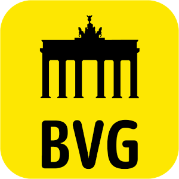 |
BVG FahrInfo Plus – is a free app that covers all public transportation in Berlin and helps you to easily navigate your way through the city. |  |
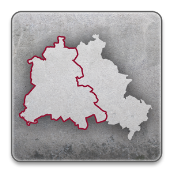 |
The Berlin Wall – is an interactive map that shows the exact location of the Wall. Photos, audio clips and texts about the respective site are stored at historically important locations between Brandenburger Tor and Potsdamer Platz. |  |
 |
Splitwise – is a free tool to track bills and other shared expenses, so that everyone gets paid back. Perfect for friends travelling together. |
 |
 |
Happycow – is a worldwide restaurant finder for vegetarian and vegan restaurants. |  |
 |
Komoot – Hike &Bike GPS Maps- is an app that provides you with offline maps, turn-by-turn navigation and recommendations on hikes, cycling routes and mountain bike trails. |  |
 |
Street Art Berlin – displays 25 walls to help you discover giant paintings, wonderful cut-outs and lovely stencils. This guide will take you right to the hotspots of the Berlin Street Art. | |
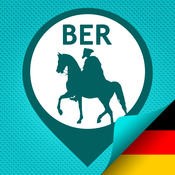 |
Berlin History Guide – is an interactive city guide directed by the GPS in your smartphone. | |
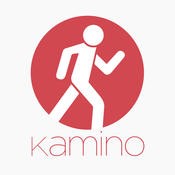
|
Kamino – is the perfect app for those of you who love to walk and explore the city without public transport. It offers walking tours created by travel experts and locals – stops for shopping and enjoying yummy food is guaranteed. | |
 |
DB navigator App – is a convenient app by Deutsche Bahn (the German railway service) that makes plannung your weekend get-aways a little easier.
|
 |
Schlagwort: Hiking
Explore Berlin’s version of the Southern Swamps
You feel like recharging your batteries and are longing for some peaceful scenery outside the city? The good thing about Berlin is that you can leave it any time and nature is just around the corner. For a day trip, we suggest the Briesetal, a landscape conservation area in the north of Berlin. The Briese is the left tributary of the Havel and, how we came to call it, Berlin’s answer to the Southern swamps.
How to get there: Take the S-Bahn (S1 or S8) to Birkenweder. From there follow the signs to the city district Briese. The hiking trail follows the river. You can walk to the end, then cross it and return on the other side. If you like to shorten your hiking tour, bridges allow you to return earlier.
Start early for the 13km long hiking trail between Birkenwerder and Zühlsdorf. For all late risers the trail to the Hubertusbrücke (or Schlagbrücke) is half the distance.
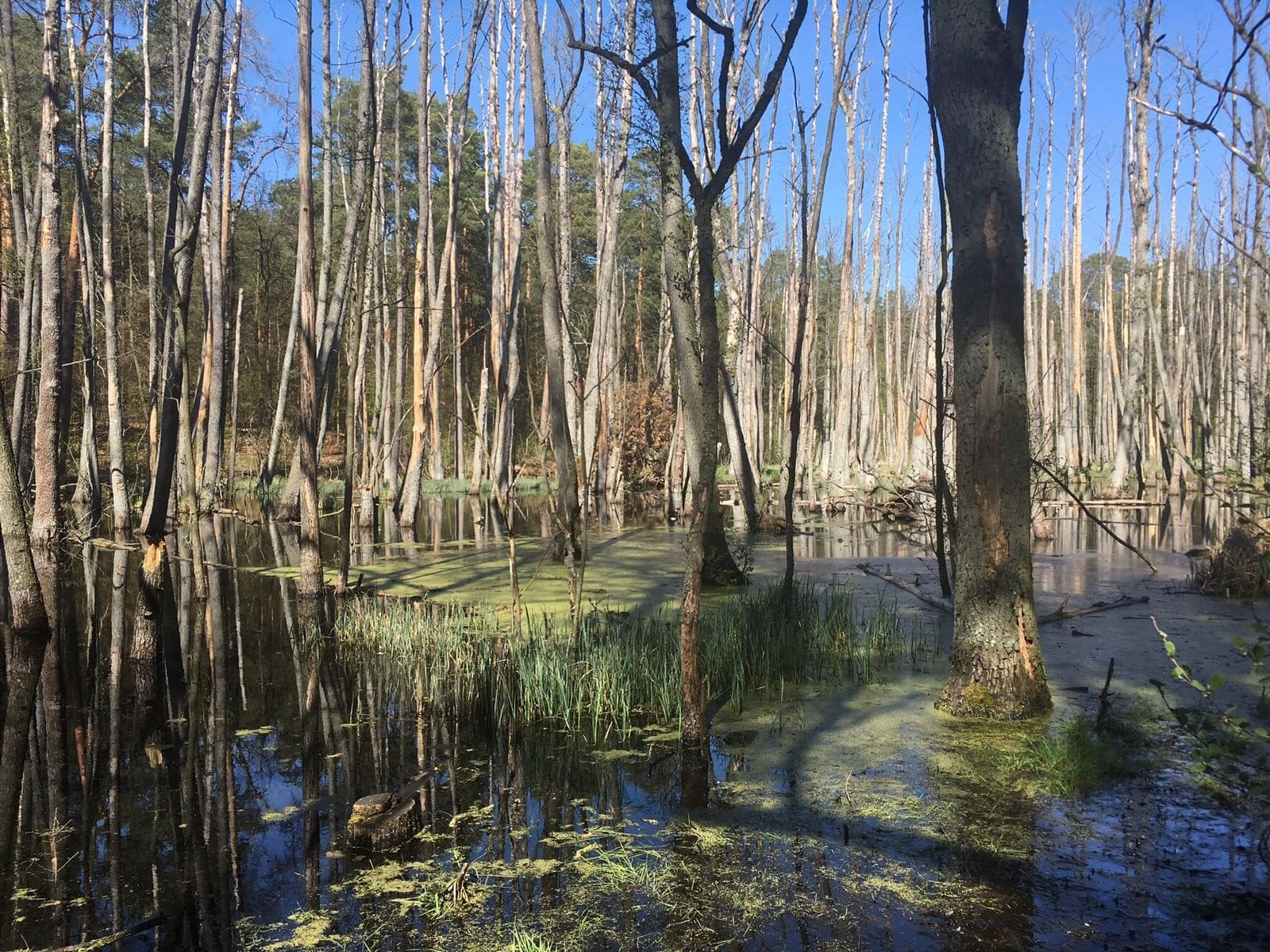
Feel like a royal at Schloss Glienicke
Berlin is not only great, because of its bustling city center, but there are also numerous scenic day trip options, many only a short S-Bahn journey away.
What about starting your exploration of Berlin’s surrounding area at the royal grounds of Schloss Glienicke, for example? Standing on the castle’s premises, you might feel a bit as if you were transported into an Italian movie set. And not without reason – in 1823, when Prince Carl von Preußen returned from his trip to Italy, he was fascinated by the Italian culture and architecture and therefore fulfilled his dream of an Italian replica of the buildings that he had seen in Italy. The castle with its mediterranean character became his summer home. What remains today is the castle, a „casino“, an orangerie, a big lion fountain and the royal garden.
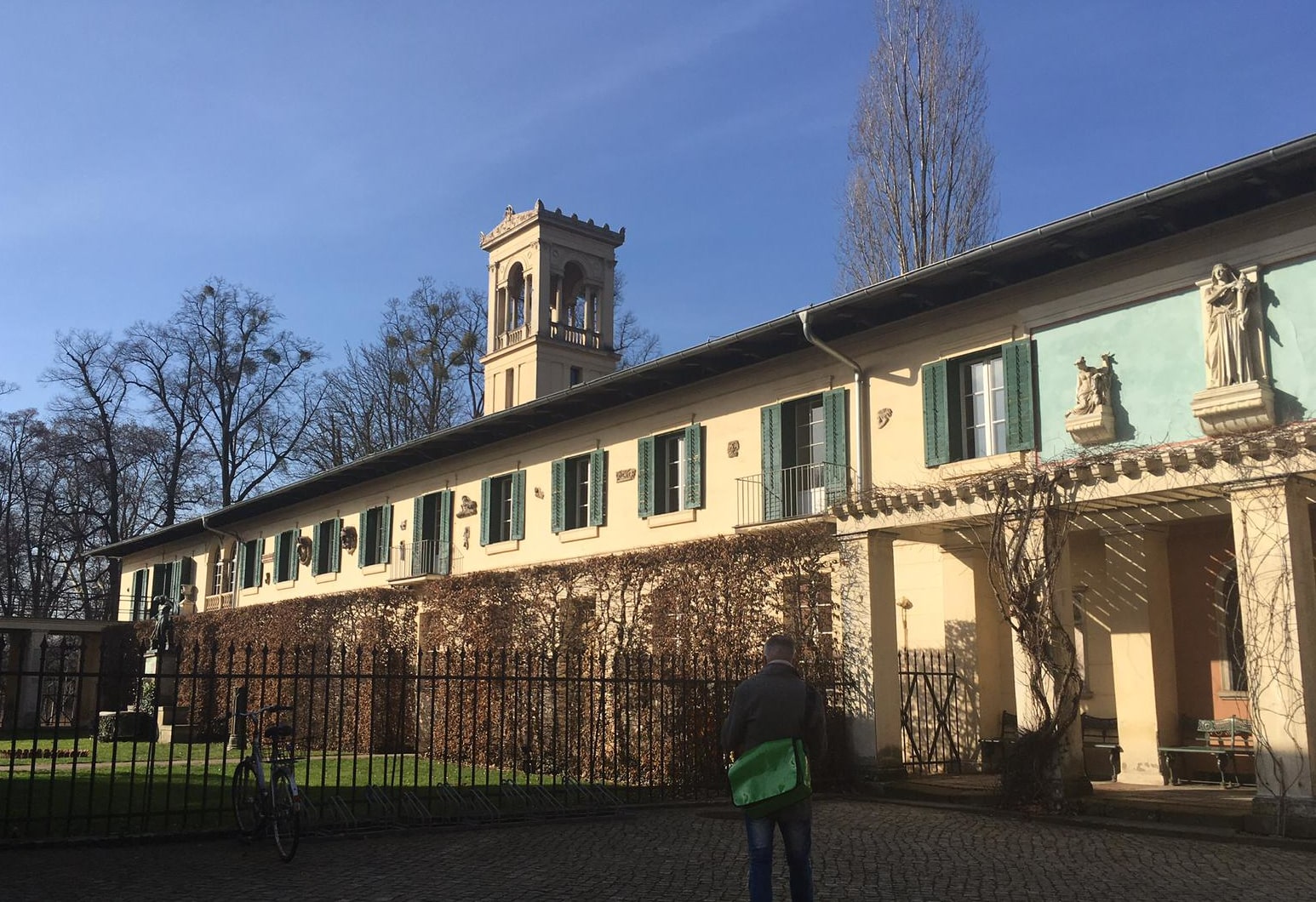
Once you’re done strolling around the royal premises and you still feel like walking, you can take the path close by that leads you along the Havel up to the Pfaueninsel and the Wannsee. For some food and refreshments, you might like to take a little pit stop at the restaurant „Wirtshaus Moorlake“ which is situated along the way.
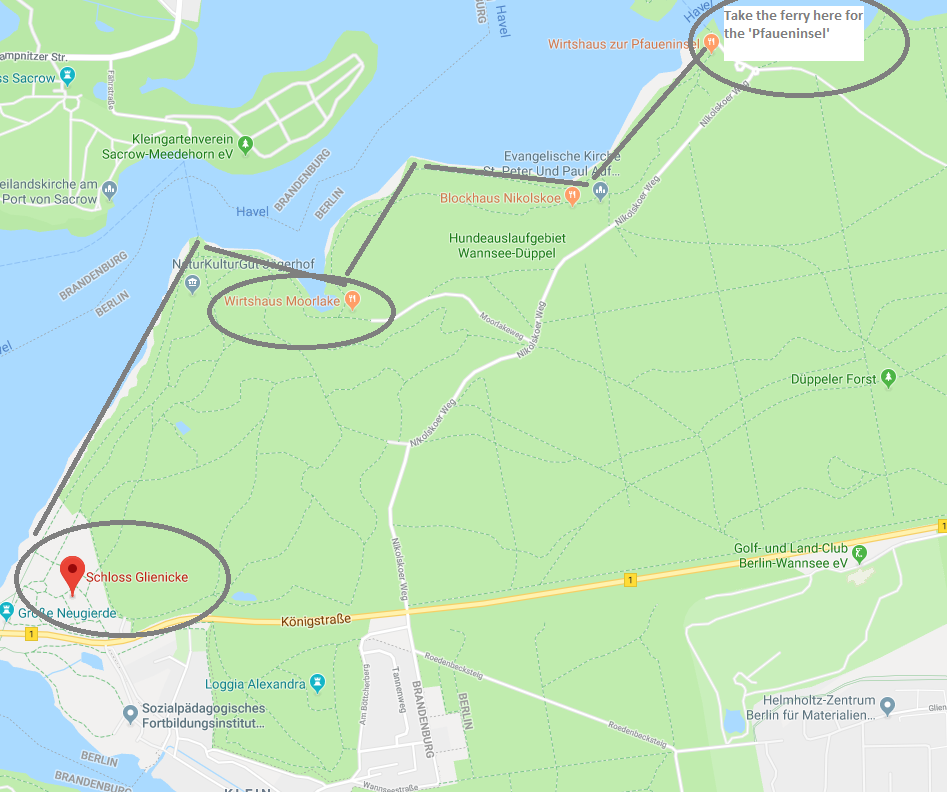
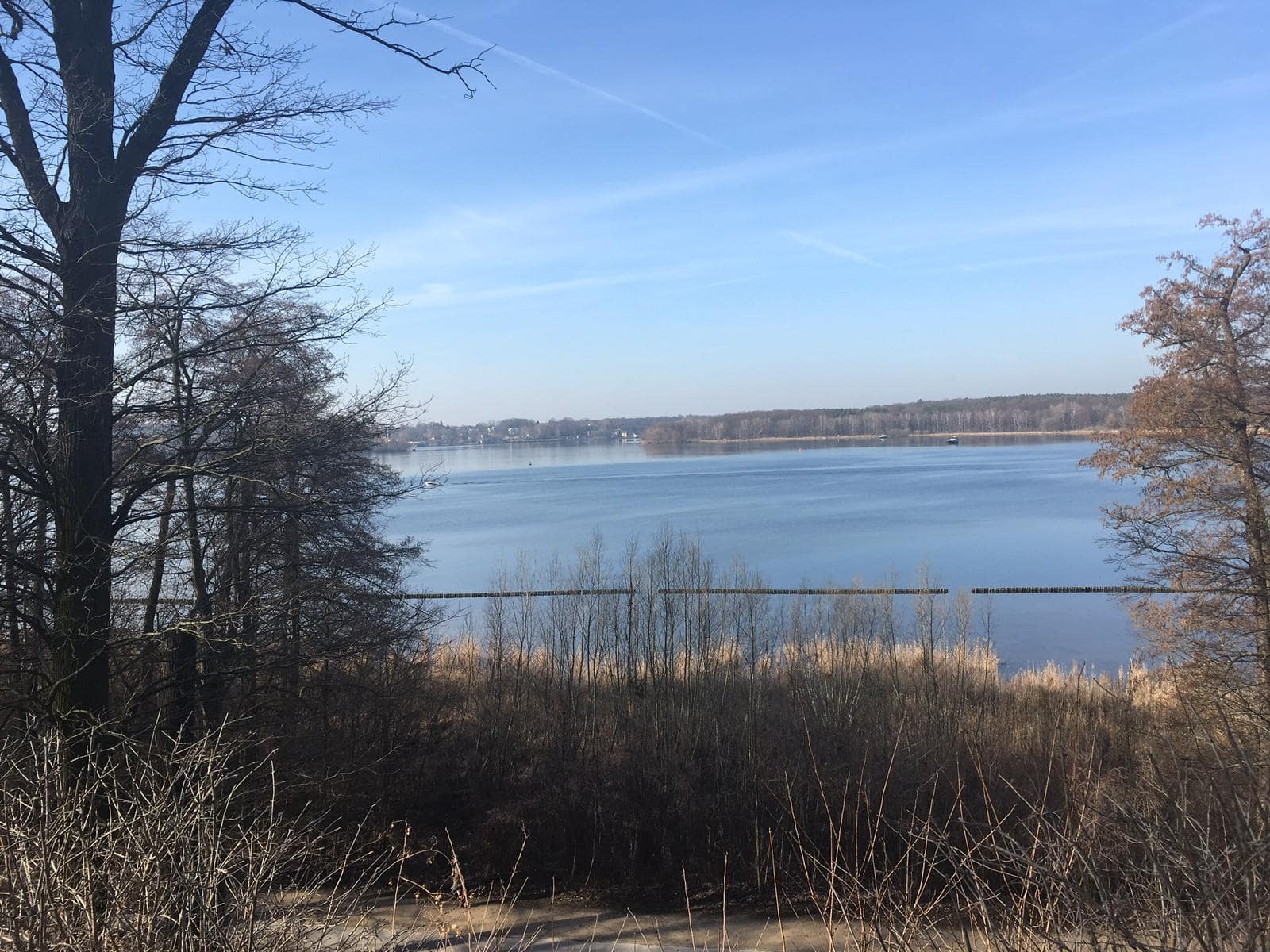

Where? Schloss Glienicke, Königstraße 36, 14109 Berlin (you can take the S-Bahn to "Wannsee" and then continue with the bus 316 for a 12 minute ride to "Schloss Glienicke"). Opening Hours: The premises can be visited all year round. If you also like to see the inside of the castle, opening hours are as follows: January - February: Closed March: Open Saturday-Sunday, 10am-4pm April - October: Open Tuesday - Sunday 10am-5:30pm November - December: Open Saturday-Sunday, 10am-4pm Admission: 6€ (5€ reduced) for the castle
Freiburg im Breisgau – „The Green City“

This account is written by a real Freiburg lover: Freiburg – situated in the south-west of Germany between the mountains of the Black Forest and one of Germany’s finest wine regions, the Kaiserstuhl, is not only one of Germany’s oldest university towns, but also very dear to my heart. When I was 9 years old my dad relocated from Berlin to Freiburg. Ever since, I spent nearly all my school holidays down there. Having grown up in Berlin, Freiburg has always been a good counterpart to Berlin and a perfect holiday destination – an amazing blend of nature, cultural events and deeelicious food!
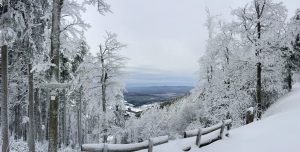
What it has to offer
The marvelous panorama of the Black Forest and the option to spontaneously take the lift up the mountains and go for an afternoon skiing adventure, while winter in the city hasn’t even arrived yet. You can also just hop on the Breisgau S-Bahn and take a trip to and around the beautiful wine region Kaiserstuhl where you can find delicious wines, all locally grown and produced. If you are up for a once-in-a-lifetime adventure, why not try a 24h hike?! For more information check out this website: http://schwarzwälder-genussmanufaktur.de/
Black Forest
As one of Germany’s most southern cities, Freiburg is famous for its amazing weather, with more days of sunshine than any other place in the country. Moreover, since Freiburg is such a university town, it does not lack the buzzling life that students bring along – lots of bars, cafés and cultural events.
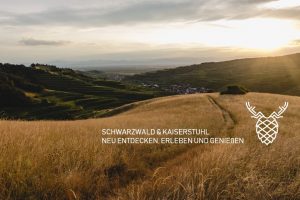
When in Freiburg you have to pay a visit to one of the famous “Strausse” of the region. A typical Strausse is a small family-run restaurant that is usually situated at a vineyard and only opens during the wine picking season. Their menu offers all the local specialities that one could wish for – Bibiliskäse (a light quark with fresh herbs) with Brägele (sauteed potatoes), Flammkuchen (onions and speck with crème fraiche on a thin pizza base) and of course wineeeee!
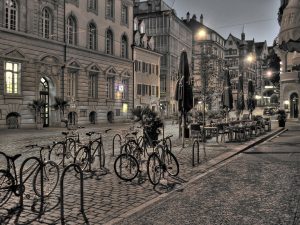
What a real Freiburger does
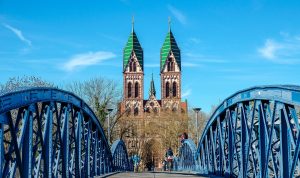
As an almost half local Freiburger myself, I have gotten to know a lot of Freiburg traditions. One and probably also my favorite one is when you arrive at the Freiburg Hauptbahnhof, you get yourself a bottled beer and climb on to the Blaue Brücke (the Blue Bridge), one of Freiburg’s most significant features, overlooking the train tracks with a beautiful view of the panoramic Black Forest mountains in the background.
Fun Fact
The Canals or better known as “Bächle”, small water-filled runnels, that run all through the old town of Freiburg, stem from the Middle Age, when they were used to fight fires, provide water for people and animals and of course to cool off during those famously hot summers. These days people still use them to dig their toes into the cold water or play around. There is a Freiburg saying that says if you fall into one of those Bächle unintentionally, you will end up marrying a Freiburger ;-).
How to get there
Take the direct ICE train from Berlin Hbf, which takes you to Freiburg Hbf in 6h and 14 min to be exact (find cheap fares on DB Sparpreisfinder).

